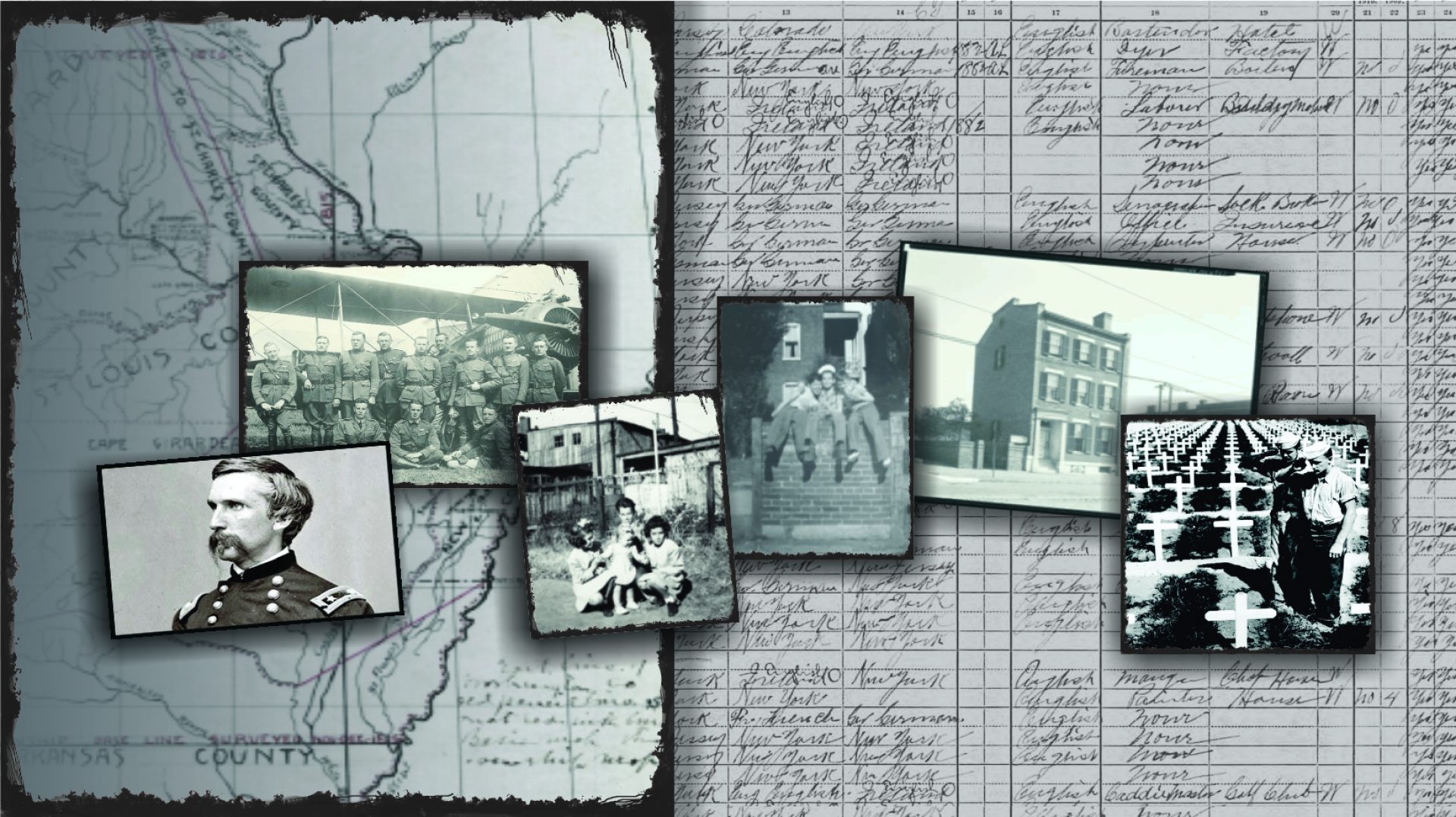To request your Civil War veteran’s military service records click here: Request Civil War Veteran Military Service Records
Civil War Veterans Military Service Records
This article provides an overview of records that can be used to document the military service history of individual veterans who participated in the Civil War. While there are many excellent resources available at the state level, this guide focuses primarily on the Civil War military service records which can be accessed at National Archives Federal research centers. The Civil War military service records outlined in this article are essential for researching a Civil War veteran and most cannot be found online.
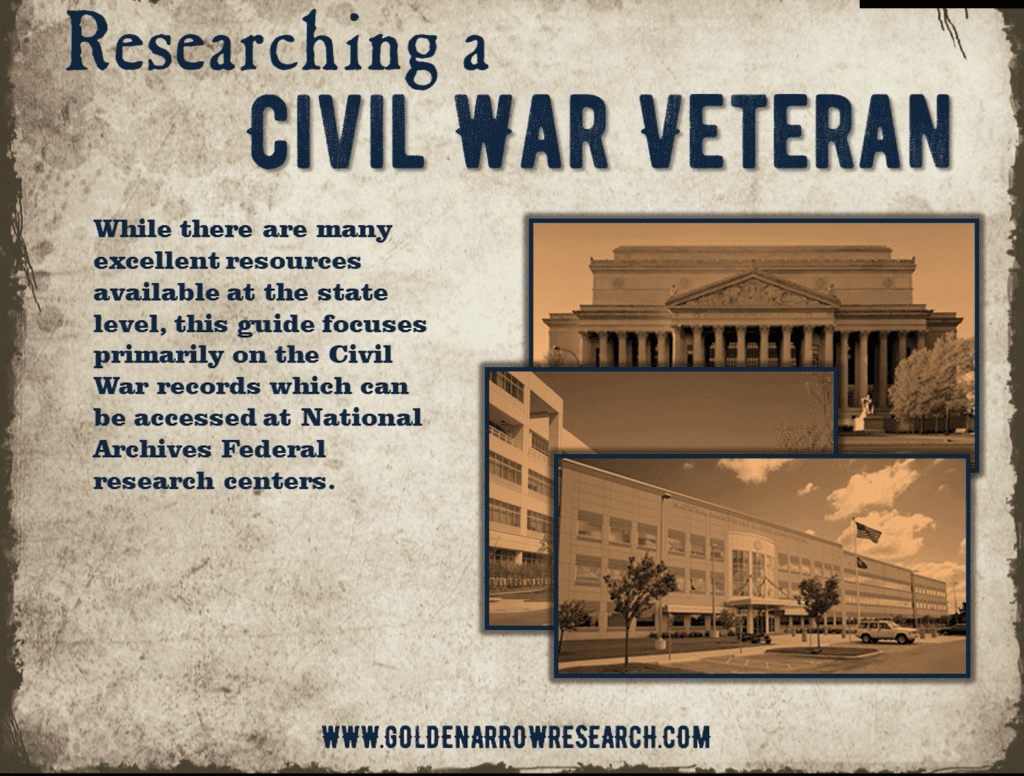
If you are interested in researching an ancestor who participated in the Civil War this is a good starting point for your research and will give you a launching pad for embarking on your research journey. Let’s look first at Union military service records which offer the bulk of the accessible service records for Civil War research and then we’ll briefly touch on the more fragmentary Confederate service records as well.
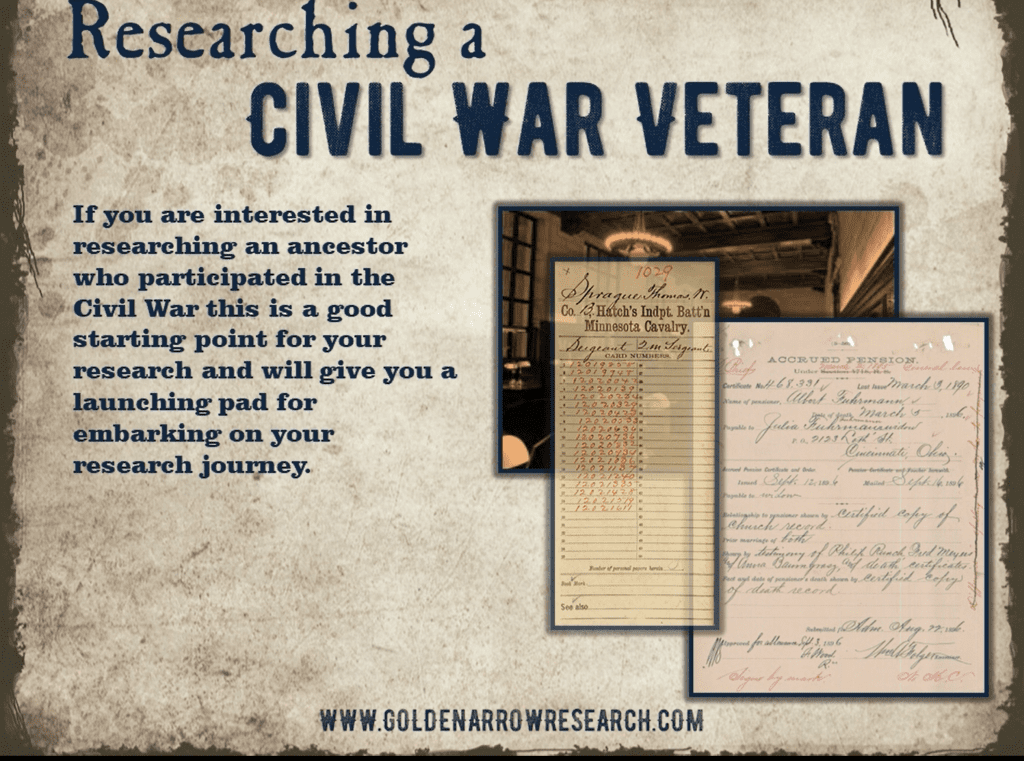
Compiled Military Service Records of Union Civil War Veterans
The compiled military service record of Civil War veterans also referred to as the C.M.S.R.- is the first file one should access when initiating research of a Civil War veteran. The Compiled military service records were created at the turn of the century by the War Department as a way to document and easily reference the service of individual Civil War veterans.
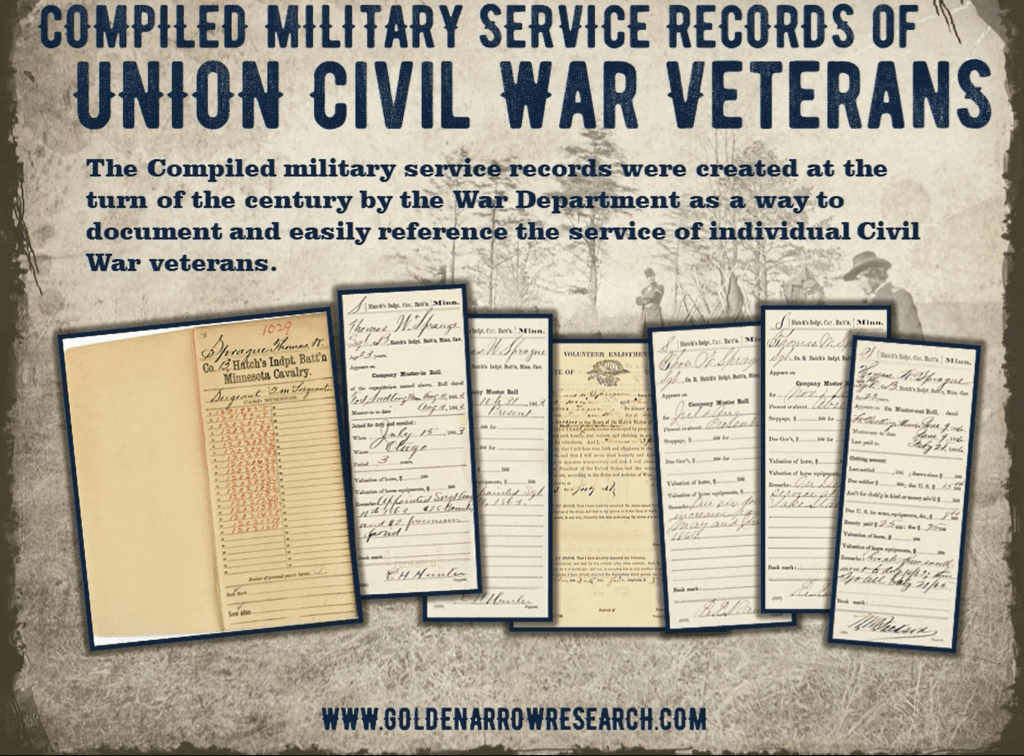
Record sources for the information found inside of the compiled military service record include: medical reports, muster rolls, pay records, and regimental reports.

Each time a Civil War soldier’s name appeared on one of these unit reports the War Department generated a card corresponding to that notation. These cards were then placed inside of the veterans’ service ‘jacket’ (a small envelope) which is what we refer to as the compiled military service record.

The Civil War compiled military service record typically provides a basic overview of the veteran’s service documenting important details -such as date of enlistment, date of discharge, rank, wounds received in action, illness, and hospitalization.
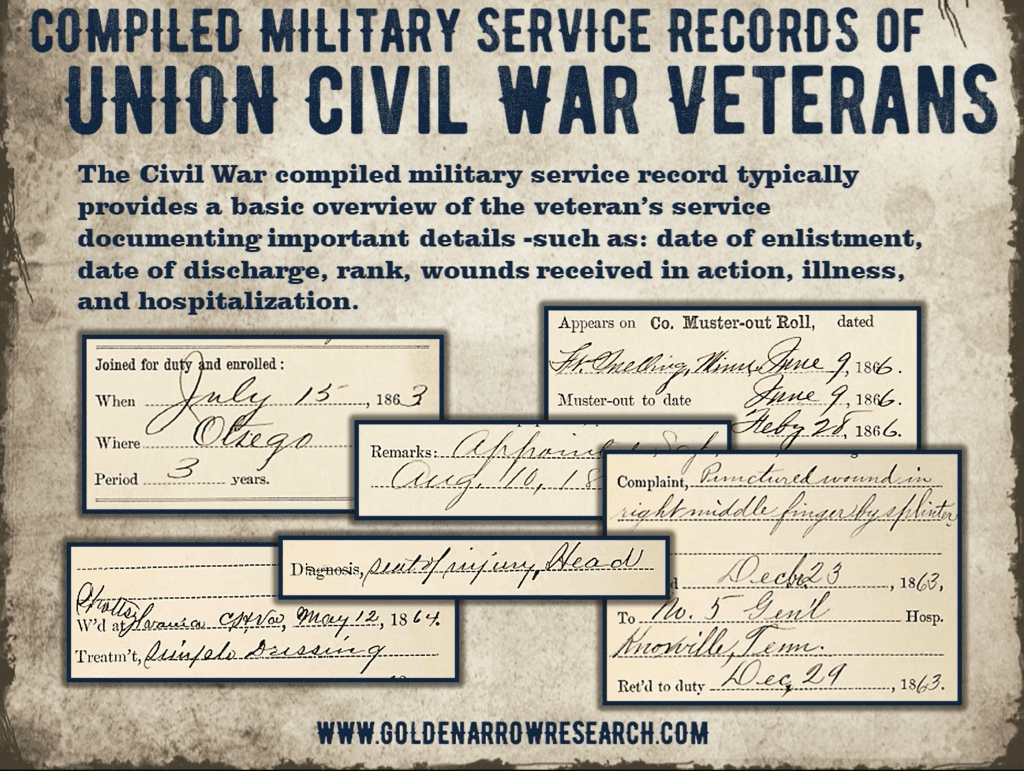
Additionally, the Civil War compiled military service records may include further documentation including records of bounty payments, enlistment forms, and even prisoner of war records for soldiers who were captured on the battlefield.
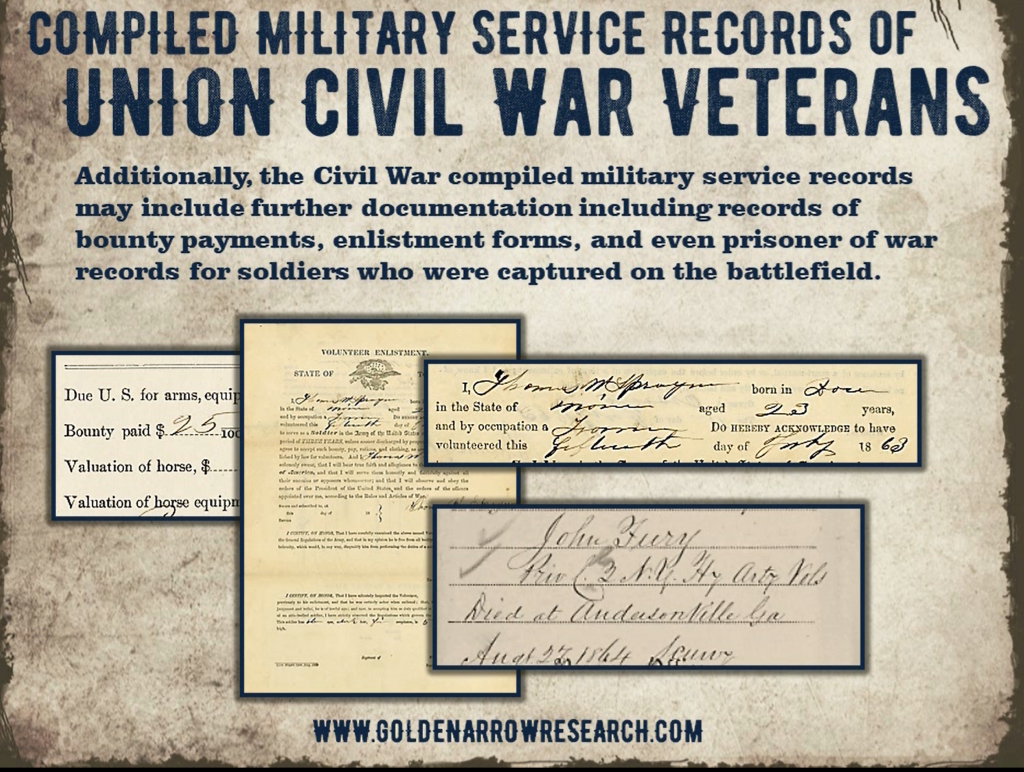
Because the War Department was so thorough when it assembled the data found inside of the Civil War compiled military service records, it is rarely necessary to consult the actual unit reports looking for mentions of individual army soldiers.
It should be noted that while the Civil War compiled military service records do provide a good overview of the Civil War veteran’s overall service, they rarely indicate participation in specific battles or skirmishes.
Military Service Records of Union Navy Veterans
Unfortunately, sailors and marines who fought for the Union do not have the equivalent of the compiled military service record.
This means that, unlike Army research of individuals from the Civil War period who have the neatly compiled service files, building a complete picture of a Civil War Navy veteran’s time in the service requires a manual search of the available Civil War naval reports.
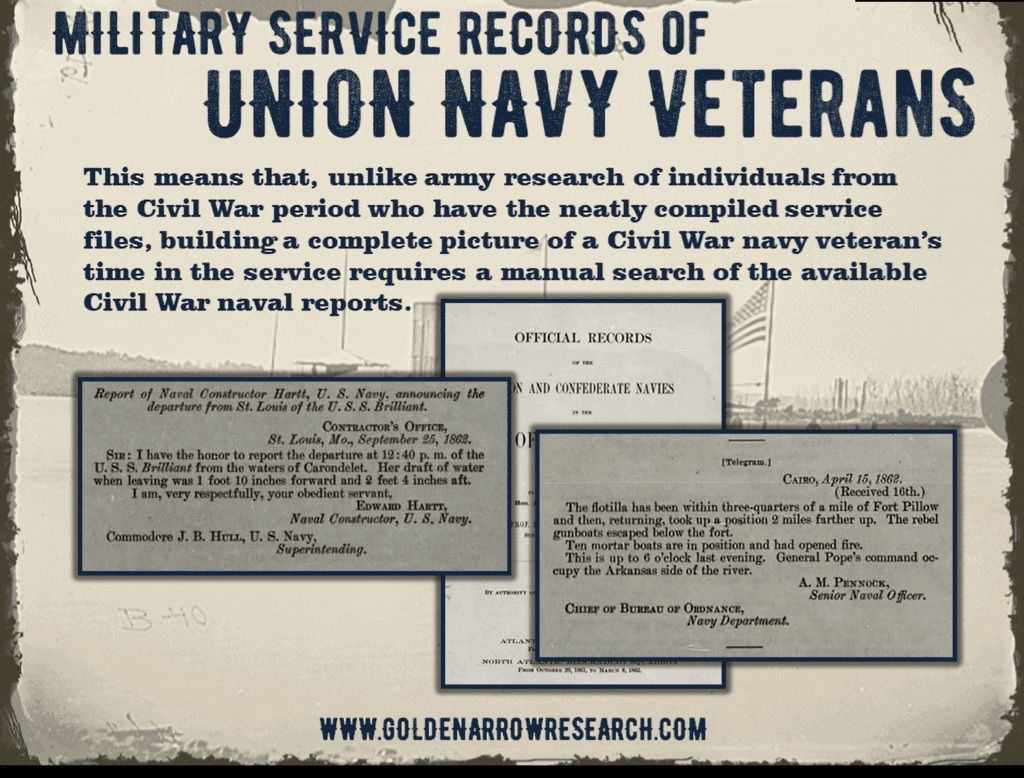
Enlistment information for Civil War Navy veterans can be ascertained from ship ‘rendezvous reports’. These reports are the naval counterpart of the army’s enlistment register and they essentially provide us with a starting point for picking up the trail of the individual Civil War naval veteran.

Further information on the ship assignment of Civil War Navy veterans can be found in the navy muster rolls. Civil War navy muster rolls indicate which sailors were on board a ship during a specific period of time, and they record basic information on the individual such as date of birth and date of enlistment. When used in conjunction with the ship history of the Civil War vessel to which a sailor was assigned, the muster rolls can allow us to see what the navy veteran was doing and where he was during the Civil War.

Research of Civil War naval officers is much more convenient since higher-ranking personnel actually have military service abstracts that can provide an overview of the officer’s service history. The service abstracts document important aspects of the Civil War veteran’s military service such as ranks, ship assignments, courts-martial trials, and injury or death in the service. The Marine Corps was actually part of the Navy Department during the Civil War. As with research of Civil War Navy veterans, it is often necessary to manually compile a marine’s service details using the Marine Corps muster rolls. Marine Corps muster rolls can show us basic information such as the marine’s enlistment dates, ship assignments, ranks, and injury or death in the service.
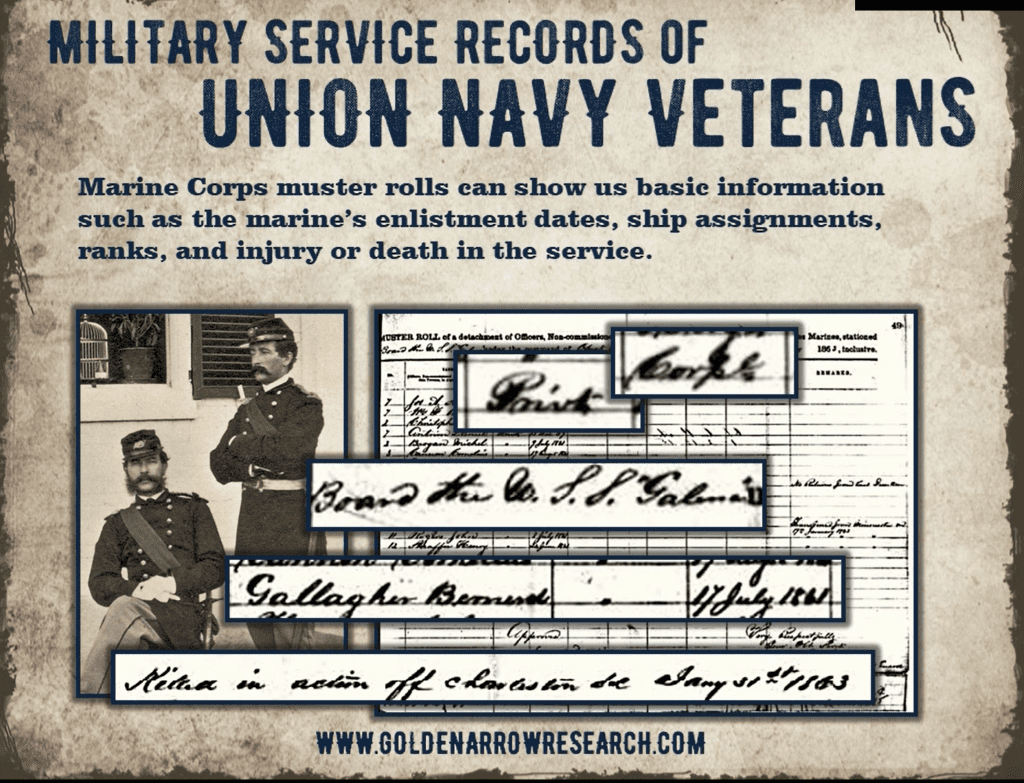
Civil War Pension Index Cards
The Pension Index Card is a finding aid for military pension files created by the Federal Government. The pension index contains military service pension file numbers associated with your Civil War veteran’s pension record.

Prior to the Civil War, pensions were generally granted in the form of land bounties or payments to widows and severely disabled veterans. By the middle of the nineteenth-century military pension laws began to evolve and offer payment for time in the military.
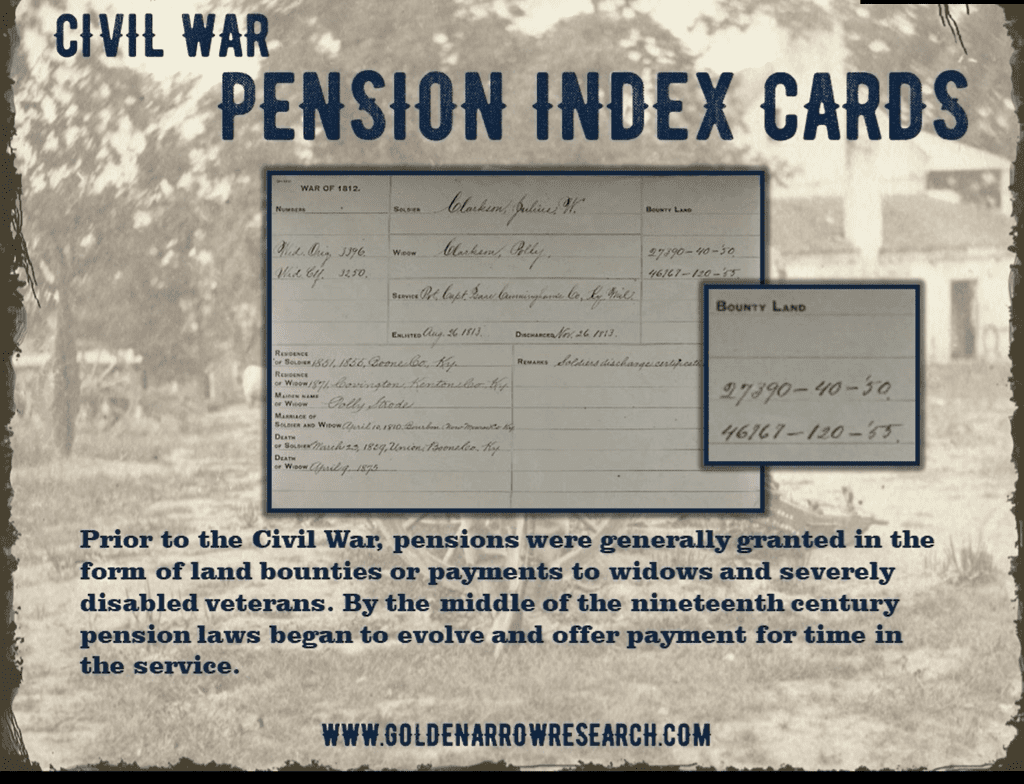
Each successive change expanded the military pension system and added more (formerly ineligible) veterans, widows, and dependents to the rolls.
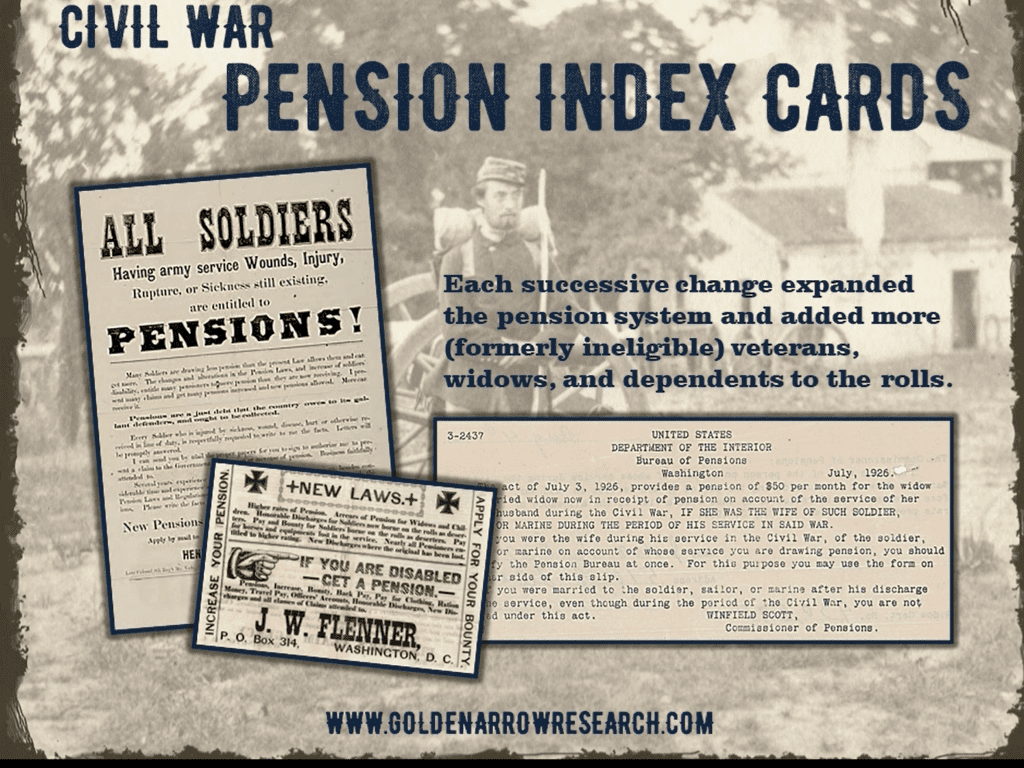
The government agencies responsible for administering military pensions also changed over the course of time, resulting in several different sets of indexes, as files were consolidated into a new government agency. These Pension Index cards are available online. Each type of card refers to the same Civil War pension file, but different indexes may contain different information so every set should be investigated.
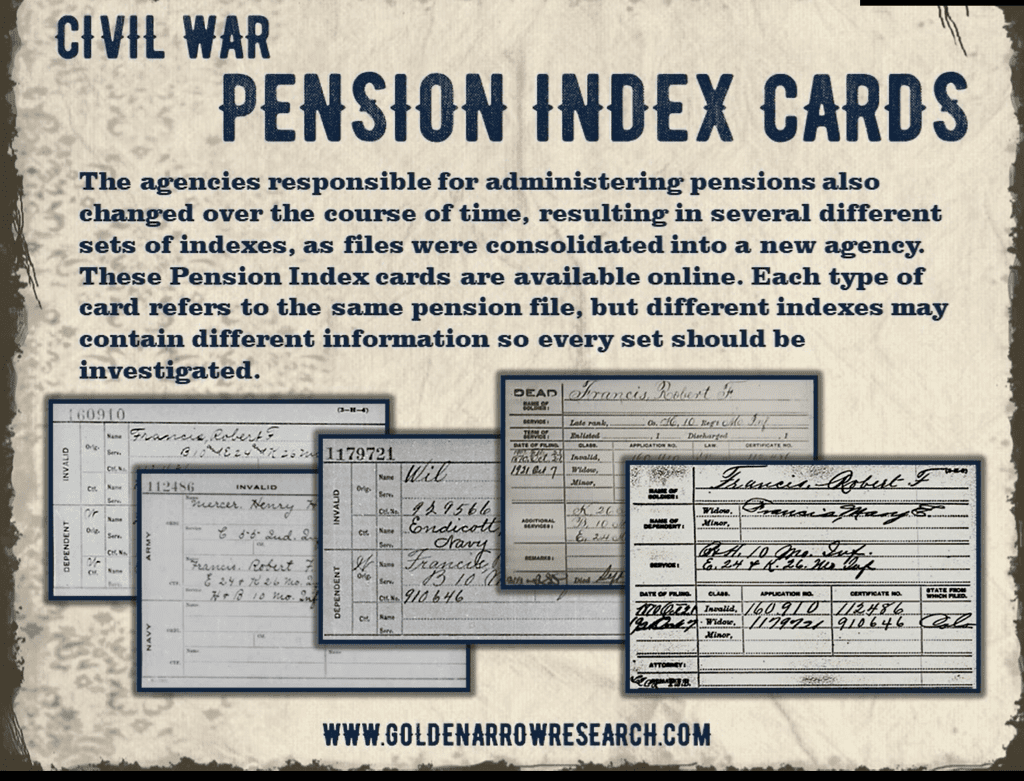
Important numbers found on the pension cards include the Soldier’s Original (SO) Application number, the Soldier’s Certificate (SC) number for an approved pension, the Widow’s Original (WO) and Certificate (WC) numbers.
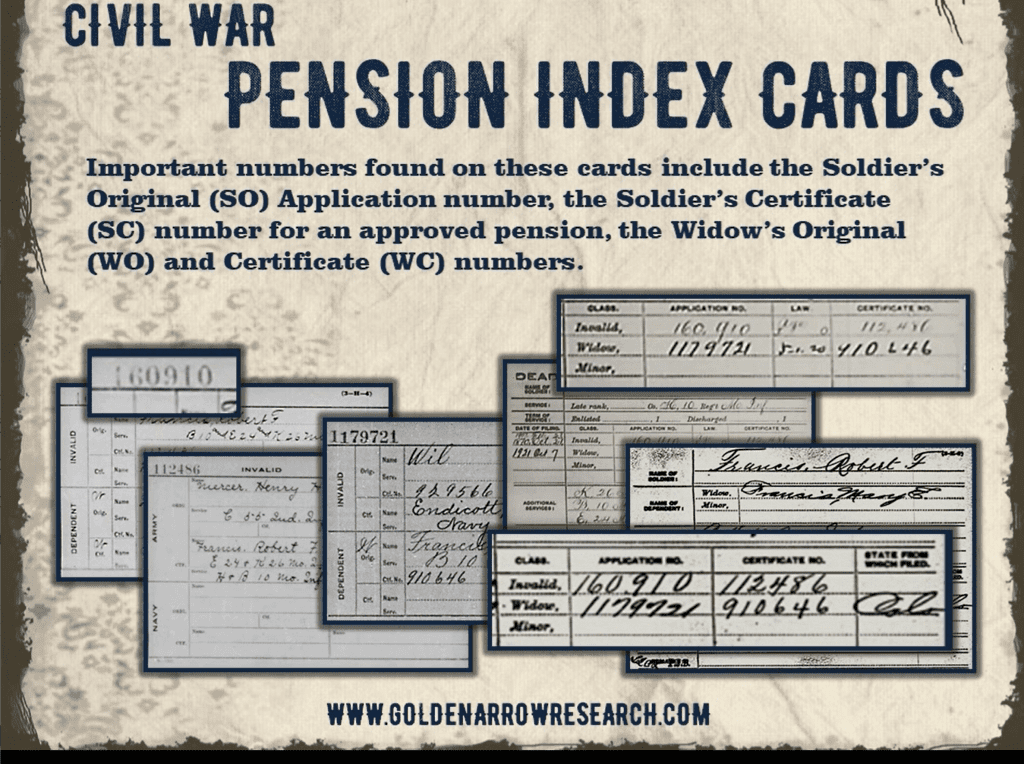
C and XC Pensions are pensions that were still active after World War I. Widow and dependent pensions were generally combined into an original soldier’s pension, and a widow’s pension can contain paperwork for more than one soldier if the widow remarried another soldier. All Civil War pension files are stored under the last number assigned, making the pension index card an important record to have for further research.
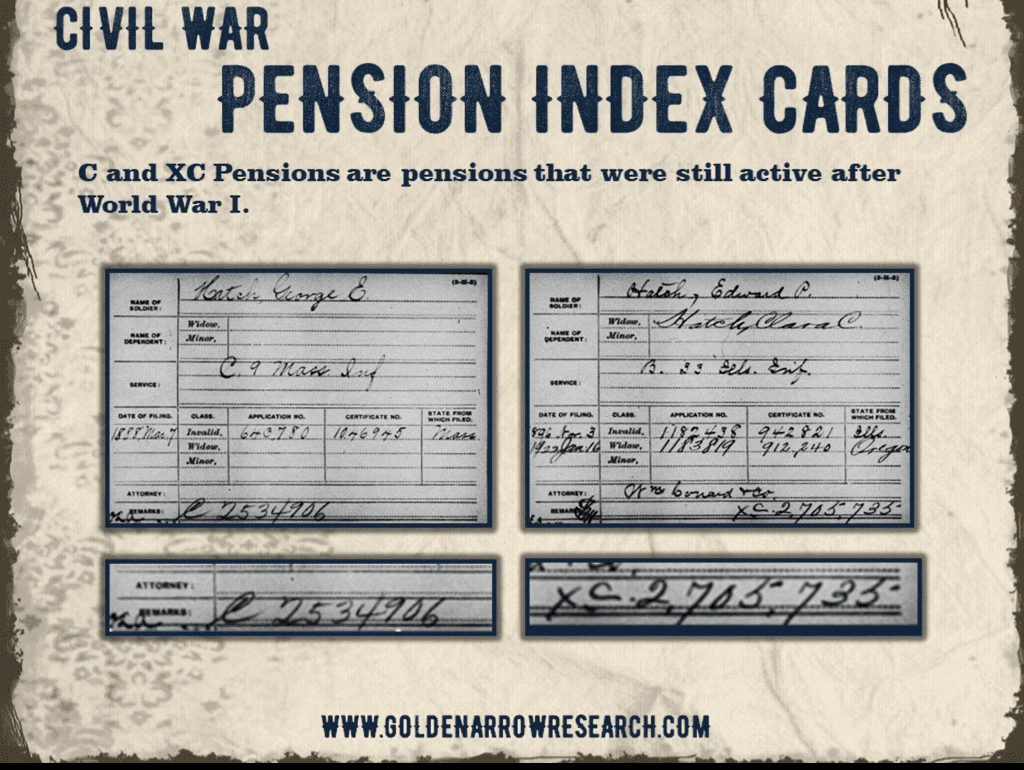
Civil War Pension Files of Union Civil War Veterans
Civil War pension files are by far the most personal of the military service records which are available at the National Archives for the research of individual Civil War veterans. Because the Civil War pension files were created during the application process to receive benefits from the government and were maintained for the duration of the pension payout they often contain vital records, witness affidavits, medical records, correspondence and other documentation which make them a treasure-trove for genealogists.
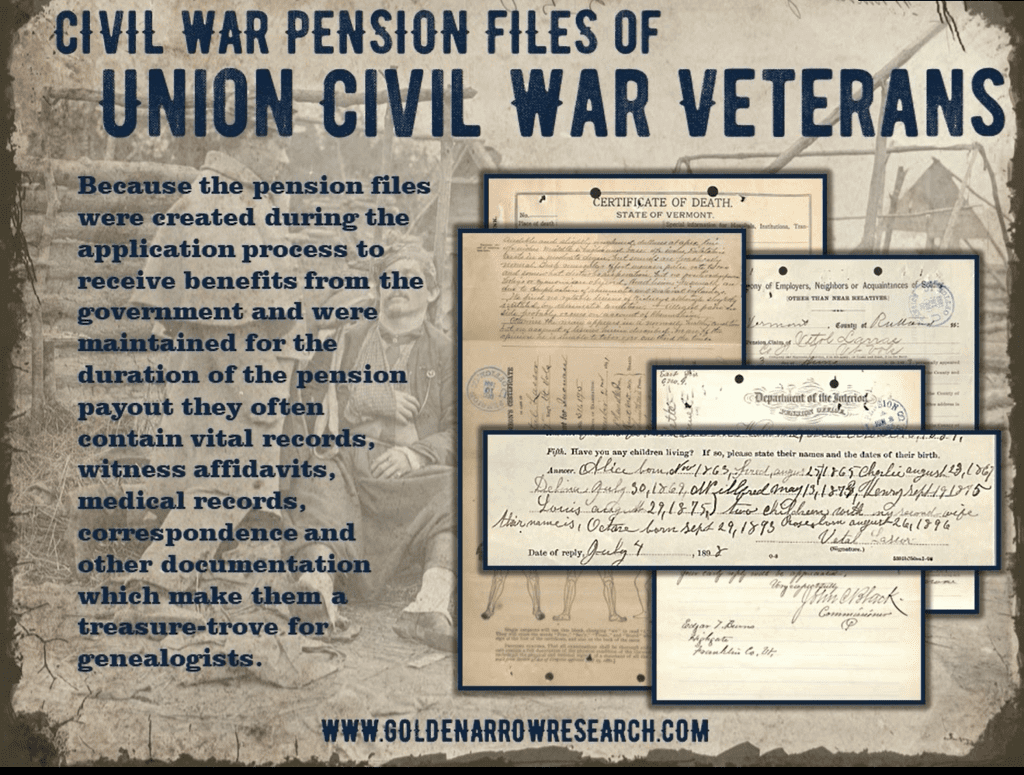
It is not unusual for the Civil War pension file to provide more detail on the Civil War veteran’s military service than their actual compiled military service record.
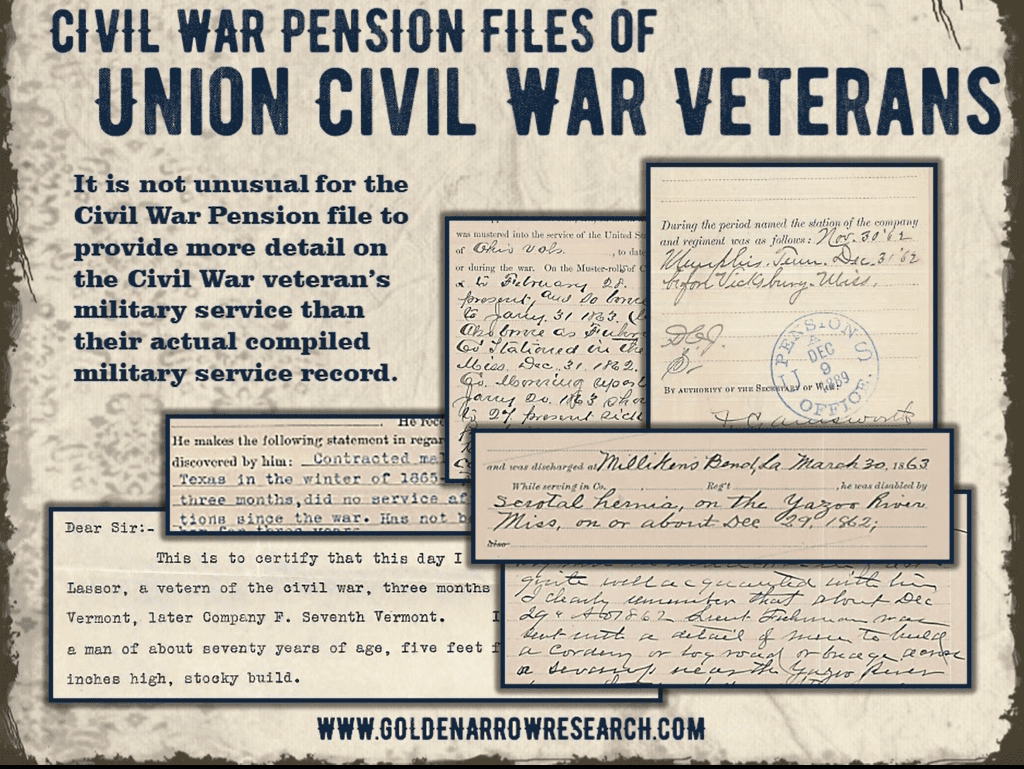
For example, if a veteran lived for many years after the war and received benefits for wounds received in battle, there is usually a large amount of documentation covering both military service and medical treatment.

Medical disability records can span decades since documentation was required for the disbursement, modification, and continuation of payments to the Civil War veteran and their beneficiaries.
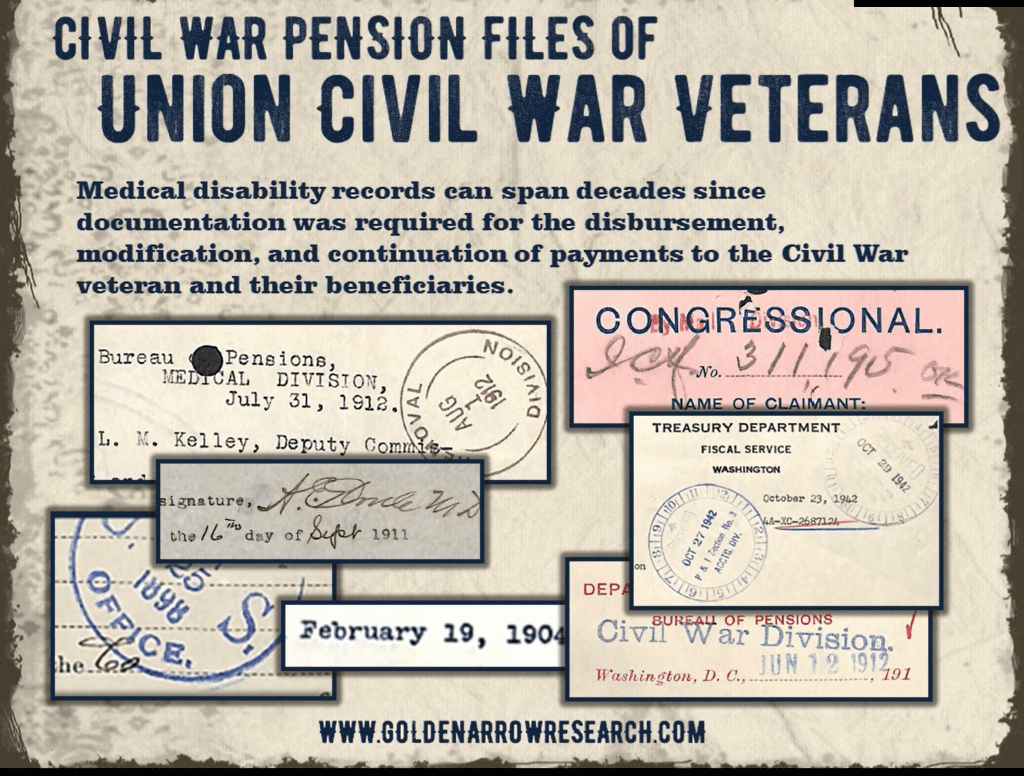
The strict requirements for documentation during the benefits application process means that the pension files are often full of handwritten correspondence as well as paperwork such as marriage licenses, birth certificates and other official records which proved the eligibility of the veteran and their family members for pension payments.
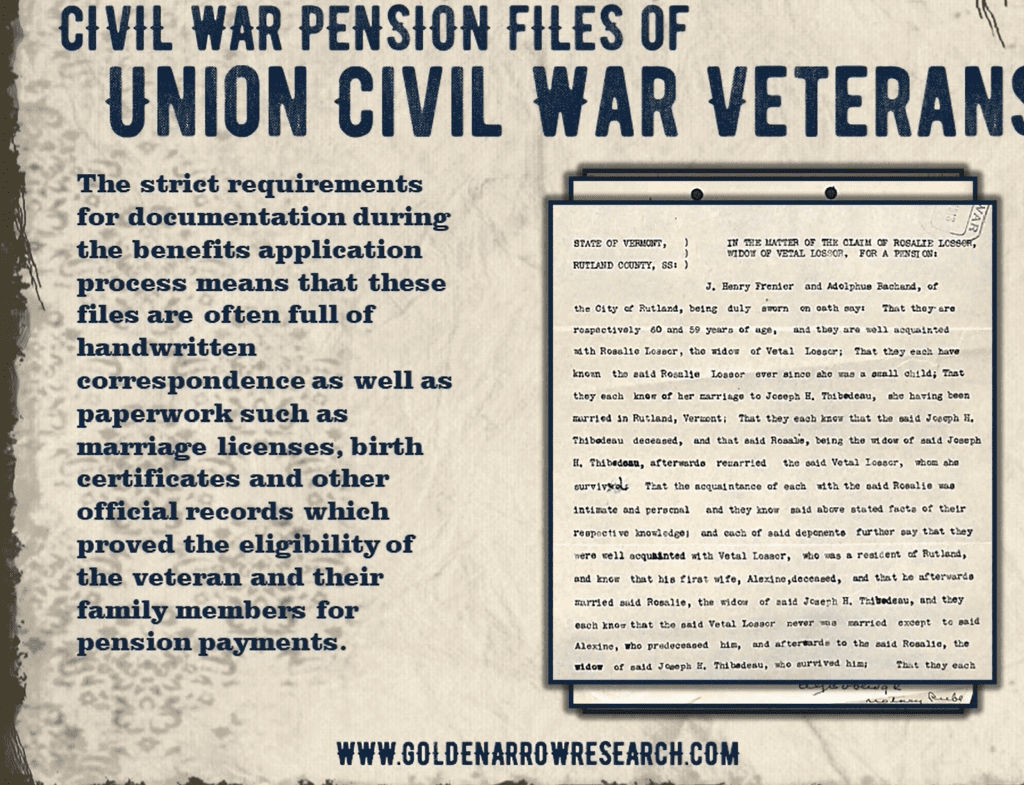
In some instances, payments were made to widows or children of the Civil War veteran for many decades after the war. These pension records and the correspondence they generated can show us what life was like in the years after the conflict for both the post-war veteran and those in their immediate family. The value of the Civil War Pension file for military and genealogical research cannot be overstated.
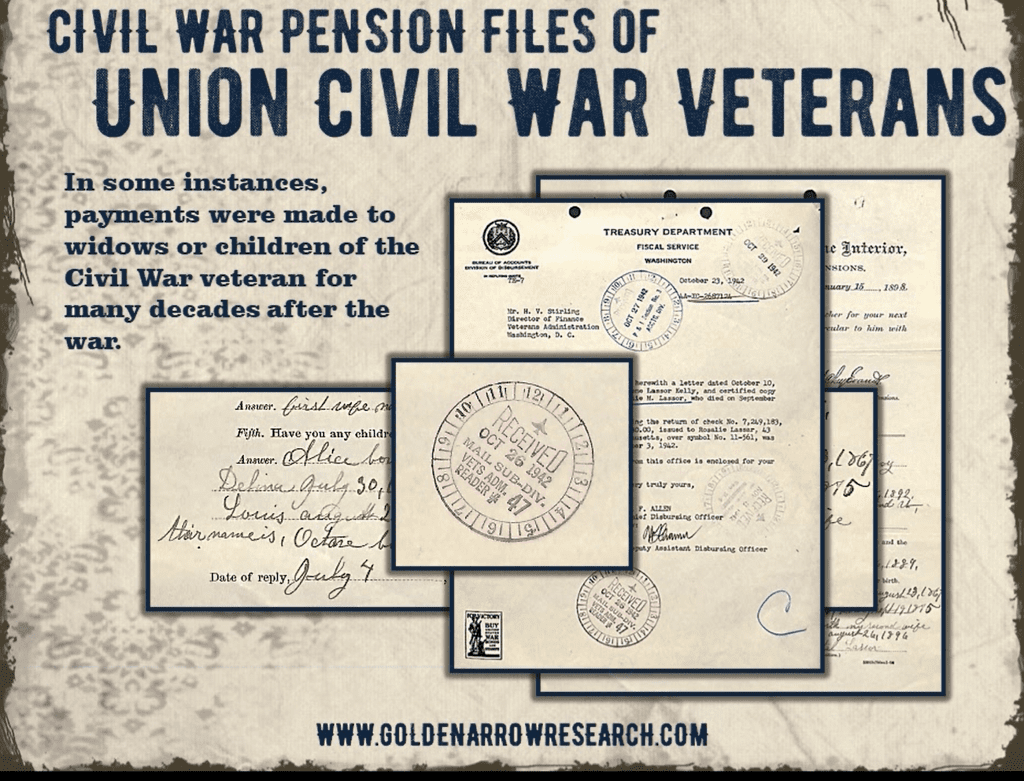
Record of Events and Unit Histories for Civil War Units
A ‘record of events’ for Civil War military units was extracted from returns and muster rolls of each unit after the war. These excerpts normally provide detail on stations and movement of the unit during the period a Civil War veteran was assigned to them.
Some units were incredibly thorough in reporting the events of each day. Other units simply provide the station location for unit headquarters from month to month.
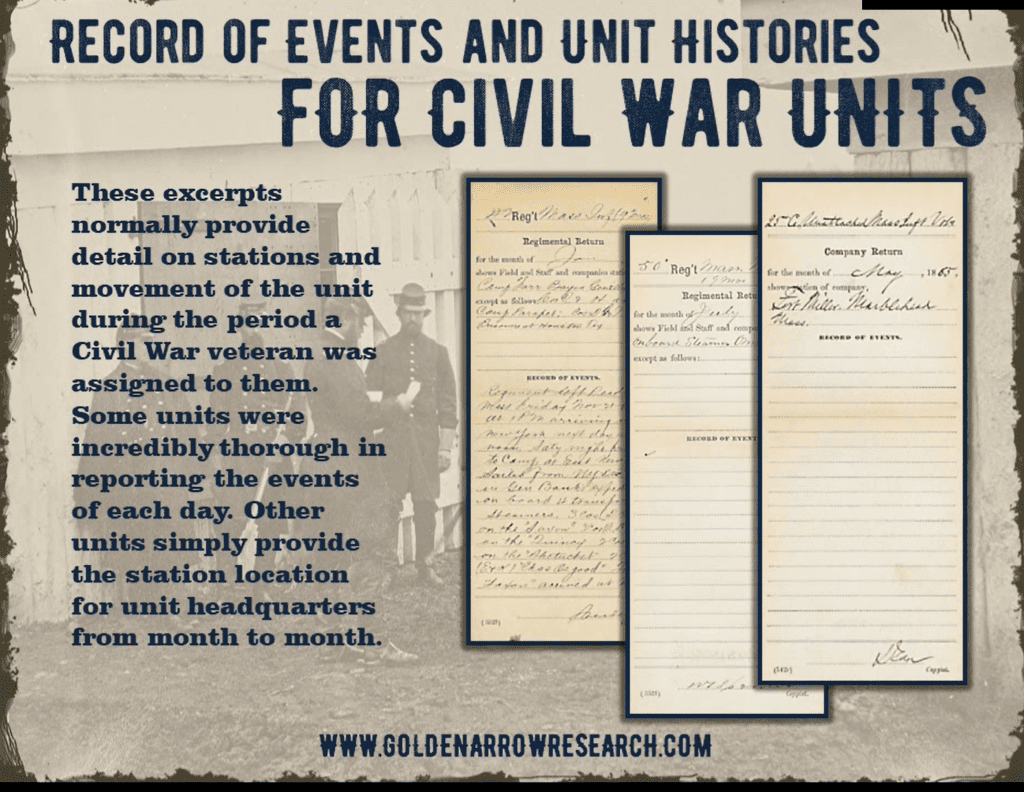
The record of events rarely mentions individual soldiers, however, when used in conjunction with the compiled service record and pension file, the Civil War record of events can help us to understand where a veteran was and what he was doing during the war. Unit histories can also add a broad overview of the unit activity for Civil War units that were active during the conflict.
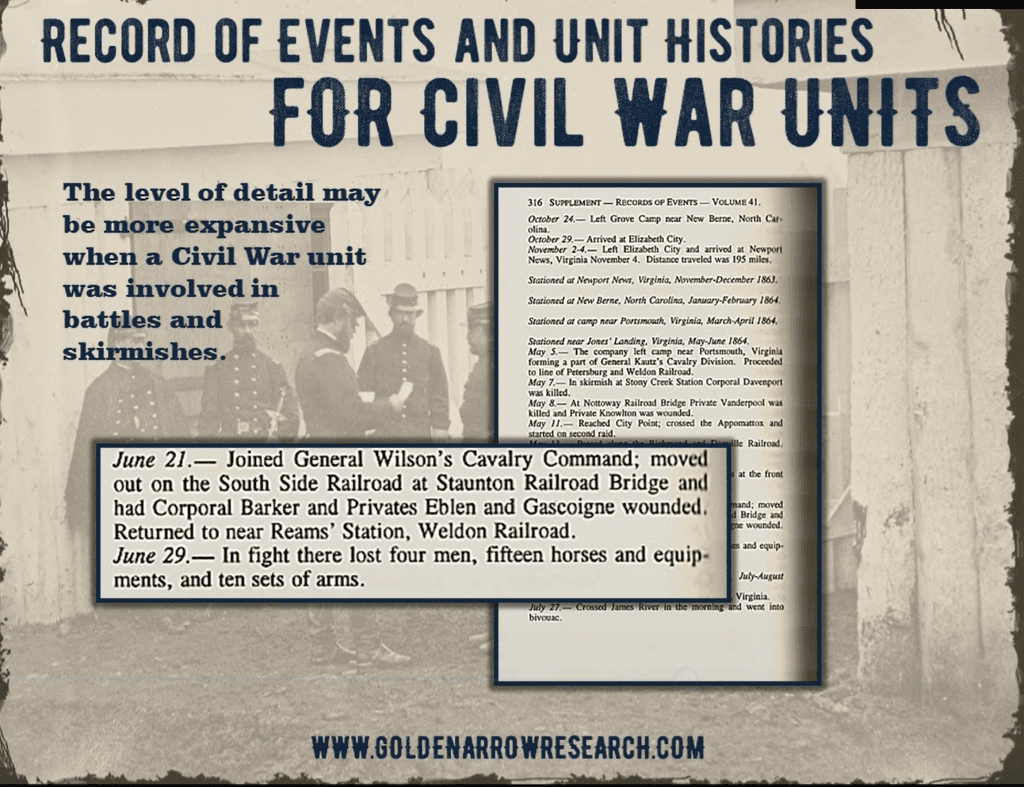
Military Service Records of Confederate Civil War Veterans
Confederate military service records are the most fragmentary of Civil War service records held at the National Archives making research of Confederate soldiers and sailors more difficult to undertake. At the turn of the century, the War Department began to create compiled military service records for Confederate veterans and a ‘record of events’ series for Confederate units as well.

Like the compiled military service record series covering the military service of Union Civil War veterans, the Confederate service records and unit ‘record of events’ were extracted from the muster rolls and other Confederate unit reports which survived the war.
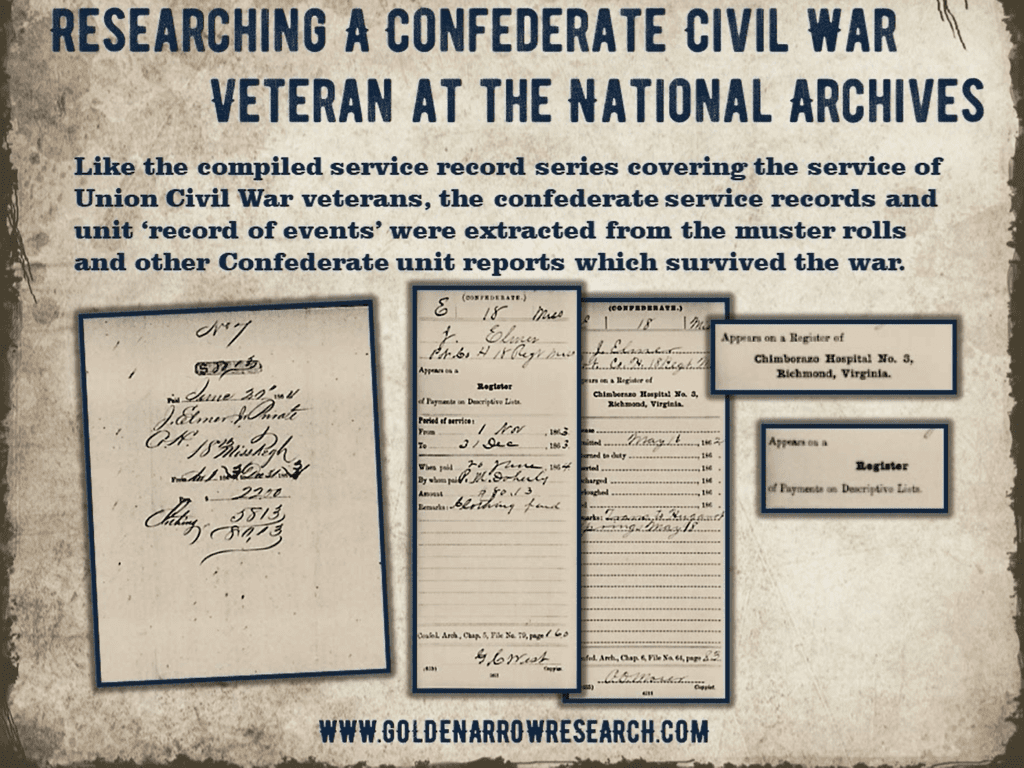
Unfortunately, many confederate records were destroyed or lost during the Civil War. The National Archives does maintain compiled military service records for some Confederate soldiers. Compiled military service records for Confederate Civil War veterans detail things such as enlistment, rank, unit, hospitalization, and wounds received in action.

In some cases, it may be possible to find service information on a Confederate soldier from a Union record source. For example, you might find documentation on a Confederate prisoner of war which was extracted from Union prison records. Confederate sailors and marines can be researched using the available Confederate muster rolls. In some cases, it may be possible to find service information on a Confederate soldier from a Union record source. For example, you might find documentation on a Confederate prisoner of war which was extracted from Union prison records. Confederate sailors and marines can be researched using the available Confederate muster rolls.
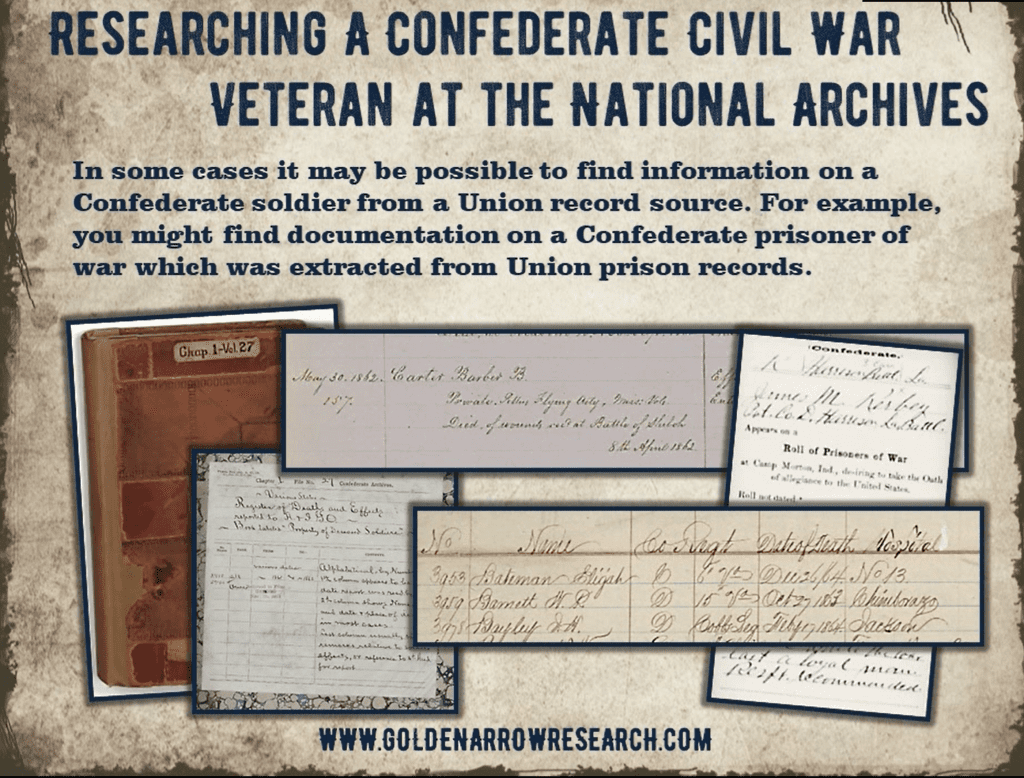
Unit records also exist for some Confederate units. Like the Union ‘record of events’ these were extracted from the Confederate muster rolls and returns which survived the war. When available the ‘record of events’ can show us the movement, station, and activity of the unit. The level of detail will vary from unit to unit with some units providing a meticulous account of unit operations while others simply provide a general location and date where the unit was headquartered.
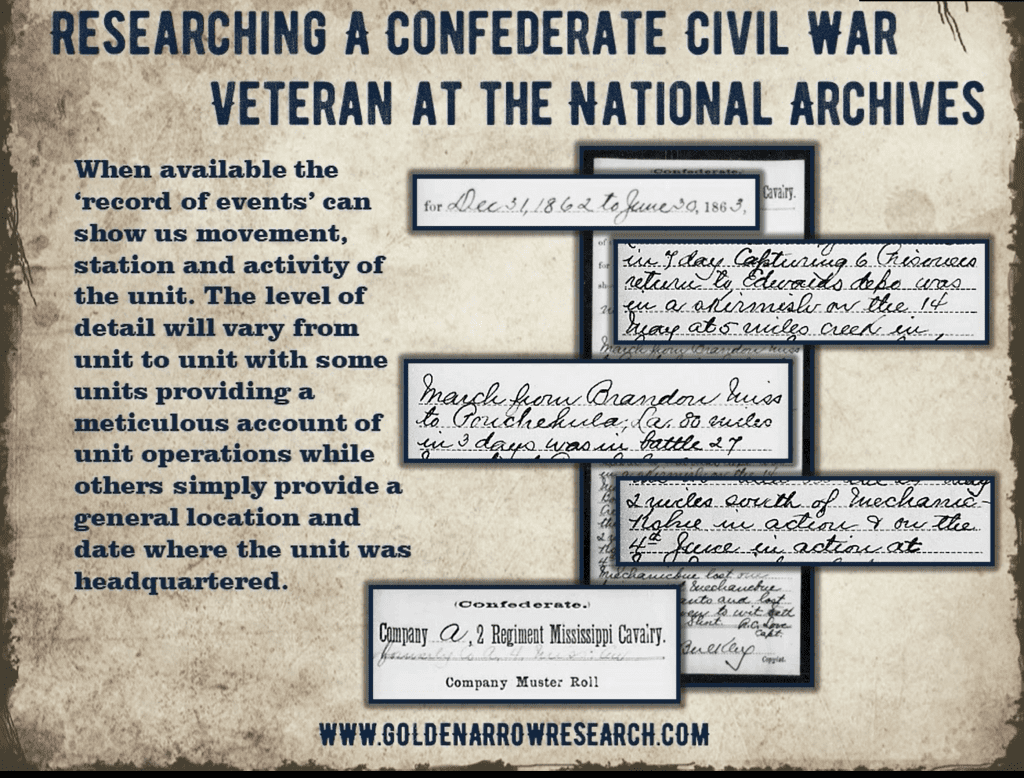
After their defeat in the Civil War, the Confederate soldiers who fought for the South were still considered rebels and thus were ineligible for any kind of military-related benefits from the federal government. Some formerly Confederate States did grant pension payments to Confederate veterans who had fought for the South. Since the National Archives is a federal archive it does not maintain the state-sponsored military pensions from the Civil War period. Military pension files for Confederate veterans must be accessed from the various state repositories and archives where they are maintained. Here is a list of Confederate sources for Civil War military service records: Confederate State Resources for Civil War Military Service Records
Photographs of Union and Confederate Soldiers
The National Archives does maintain photographs from the Civil War both Union and Confederate, although identified portraits of individual soldiers consist primarily of high-ranking officers. The photograph collection at the National Archives includes notable civilians including photographs of notable women of the Civil war, Union and Confederate personnel, equipment, camps, and activity of military units during the conflict.
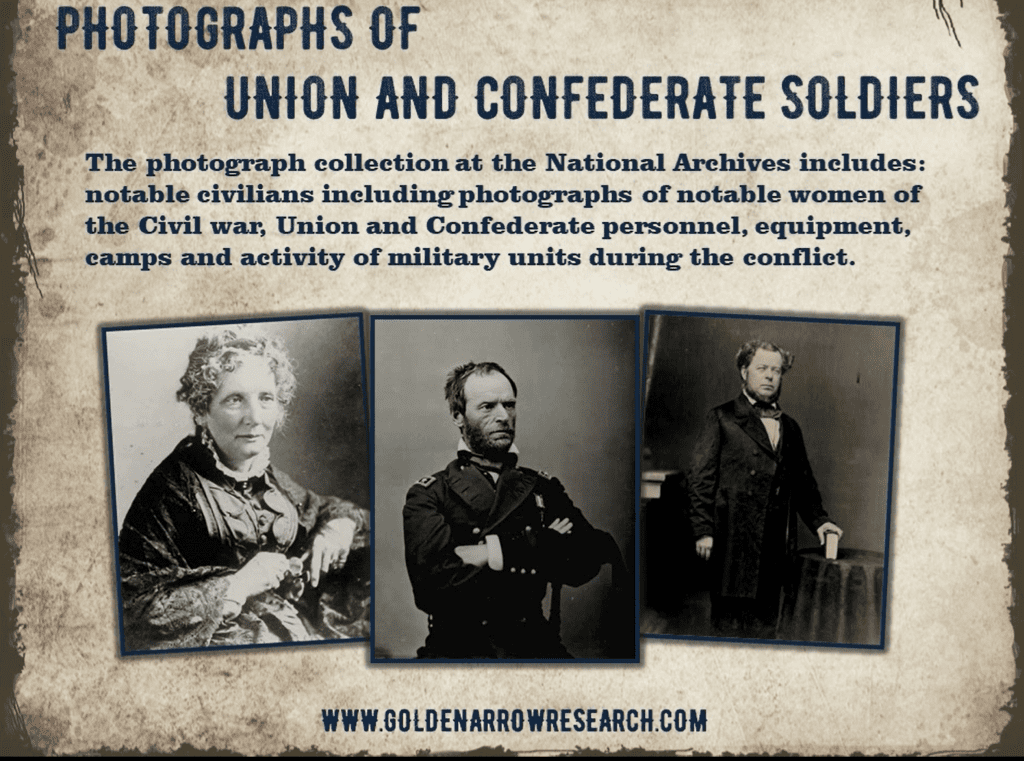
Because early photography required lengthy exposures no actual combat photos exist. Battle sites and the aftermath of battles were photographed, and some battle actions were later recreated by professional photographers.

As previously mentioned, state archives may contain further records and images for individual Civil War participants.
Check out our video channel for more helpful tutorials on researching veterans at national and state archives or…
Request Your Civil War Veteran’s Military Service Records
Another website of interest may be the National Parks Service which has a good database on Civil War veterans: Civil War Research Source
Happy hunting!
